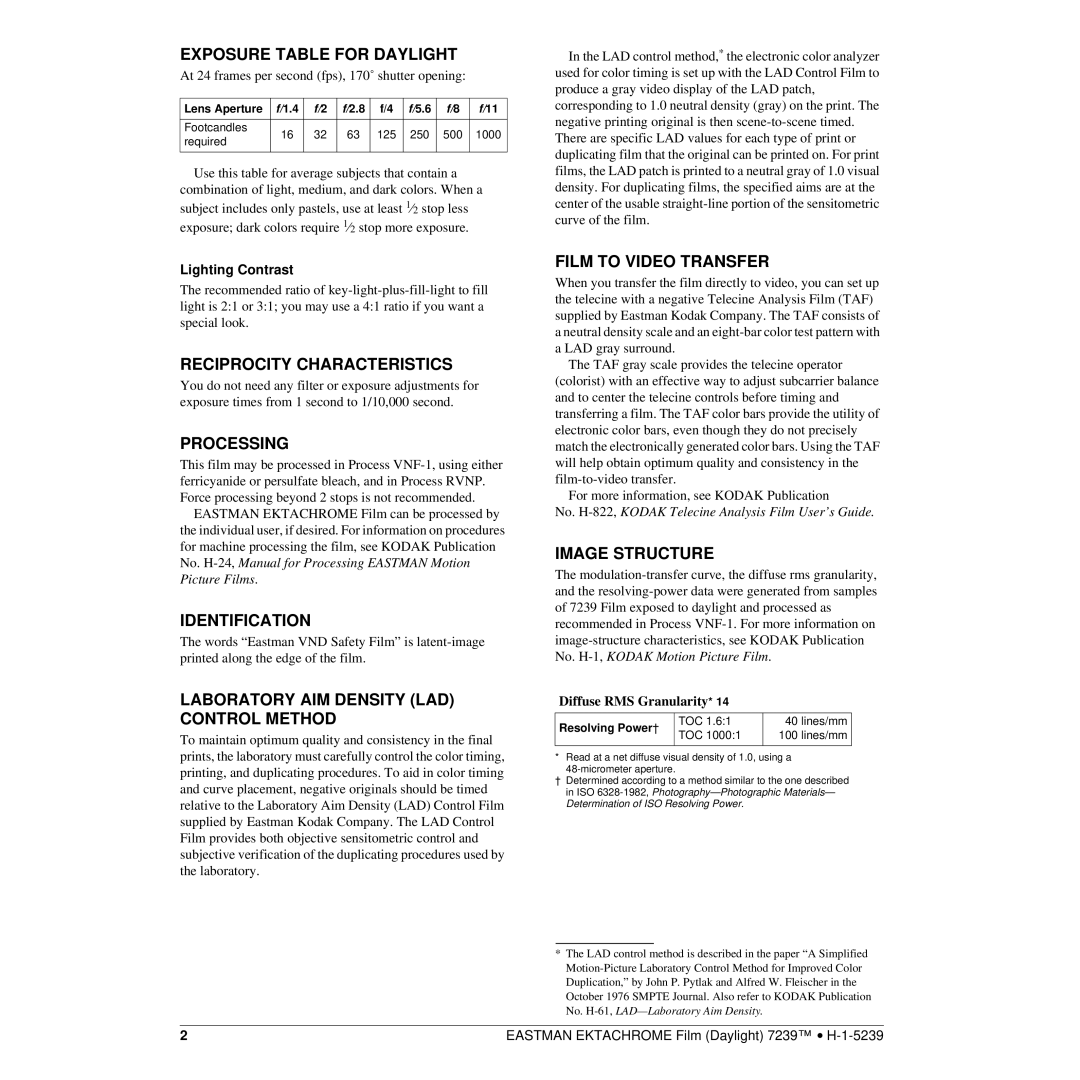
EXPOSURE TABLE FOR DAYLIGHT
At 24 frames per second (fps), 170˚ shutter opening:
Lens Aperture | f/1.4 | f/2 | f/2.8 | f/4 | f/5.6 | f/8 | f/11 | |
|
|
|
|
|
|
|
| |
Footcandles | 16 | 32 | 63 | 125 | 250 | 500 | 1000 | |
required | ||||||||
|
|
|
|
|
|
| ||
|
|
|
|
|
|
|
|
Use this table for average subjects that contain a combination of light, medium, and dark colors. When a subject includes only pastels, use at least 1¤2 stop less exposure; dark colors require 1¤2 stop more exposure.
Lighting Contrast
The recommended ratio of
RECIPROCITY CHARACTERISTICS
You do not need any filter or exposure adjustments for exposure times from 1 second to 1/10,000 second.
PROCESSING
This film may be processed in Process
EASTMAN EKTACHROME Film can be processed by the individual user, if desired. For information on procedures for machine processing the film, see KODAK Publication No.
IDENTIFICATION
The words “Eastman VND Safety Film” is
LABORATORY AIM DENSITY (LAD) CONTROL METHOD
To maintain optimum quality and consistency in the final prints, the laboratory must carefully control the color timing, printing, and duplicating procedures. To aid in color timing and curve placement, negative originals should be timed relative to the Laboratory Aim Density (LAD) Control Film supplied by Eastman Kodak Company. The LAD Control Film provides both objective sensitometric control and subjective verification of the duplicating procedures used by the laboratory.
In the LAD control method,* the electronic color analyzer used for color timing is set up with the LAD Control Film to produce a gray video display of the LAD patch, corresponding to 1.0 neutral density (gray) on the print. The negative printing original is then
FILM TO VIDEO TRANSFER
When you transfer the film directly to video, you can set up the telecine with a negative Telecine Analysis Film (TAF) supplied by Eastman Kodak Company. The TAF consists of a neutral density scale and an
The TAF gray scale provides the telecine operator (colorist) with an effective way to adjust subcarrier balance and to center the telecine controls before timing and transferring a film. The TAF color bars provide the utility of electronic color bars, even though they do not precisely match the electronically generated color bars. Using the TAF will help obtain optimum quality and consistency in the
For more information, see KODAK Publication
No.
IMAGE STRUCTURE
The
Diffuse RMS Granularity* 14
Resolving Power† | TOC 1.6:1 | 40 lines/mm | |
TOC 1000:1 | 100 lines/mm | ||
| |||
|
|
|
*Read at a net diffuse visual density of 1.0, using a
†Determined according to a method similar to the one described in ISO
*The LAD control method is described in the paper “A Simplified
2 | EASTMAN EKTACHROME Film (Daylight) 7239™ · |
